Growing vegetables is satisfying, healthy and fun to do, but beginners may be forgiven for feeling a little daunted as to where to begin the project.
It is best to grow crops requiring minimal maintenance, this means those that are ready to harvest within a short time, and are hardy against the peril of pests and disease.
So believe it or not, kickstarting a vegetable garden does not have to be a huge feat.
Here are some easy vegetables to grow (even if you are a novice).
Tips for Growing Vegetables
Rachel Fernie, spokesperson for garden experts Hillarys, believes planning and recognizing what you are working with can be key to reaping a bumper harvest.
She told Newsweek: "Firstly you want to decide what it is that you're going to plant in your garden in order to understand the requirements of each plant and vegetable—for example, a lot of herbs, fruits and vegetables, as well as flowering plants, require between six to eight hours of sunlight per day throughout their growing season, so you need to take this into consideration when picking a spot.
"It's important to have some basic tools in your gardening kit, such as: pruning scissors, a spade, trowel, garden fork, forked trowel and gardening knife to assist with those pesky weeds."
She added it will make the life of any budding gardener "far easier if you do have a water supply close to hand, such as a hosepipe."
Fernie said: "Unless you want to end up with a garden full of dead plants, knowing how much to water your plants is important—a good rule of thumb is to push your finger an inch or so into the soil, if your finger comes out dry then you need to add water."
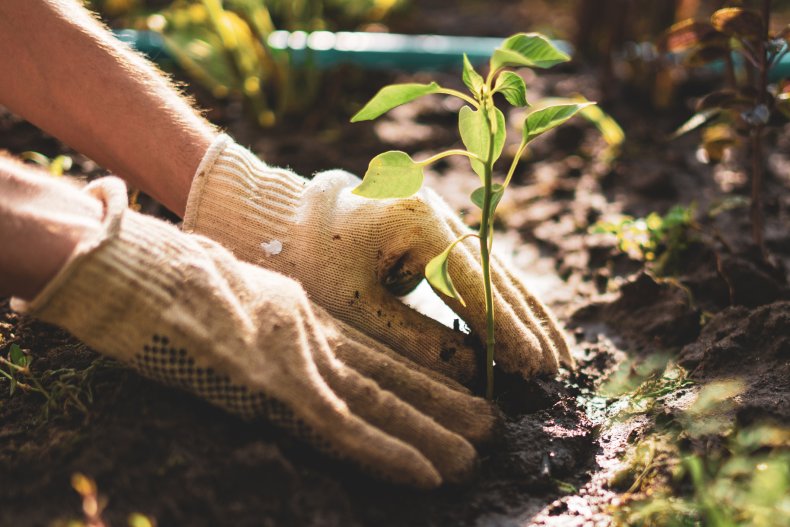
Then once what is going to be planted has been decided, green-fingered gardeners will wish to ensure the soil is ready for what is ahead
Fernie said: "It's best to work a good compost into the top eight to 12 inches of soil with a spade or fork, mixing the compost in with the soil already there. It's worth considering mulch to keep weeds at bay when growing flowers or foliage.
"Mulch looks attractive when placed around your plants and, by spreading a two to three inch layer, it suppresses weeds by blocking the light which enables them to grow.
"Labelling your plants will help you to remember what has been planted and where, as well as how to treat these plants to ensure they grow strong and healthy.
"If you don't fancy labels, why not sketch your garden and note everything down. You could list where everything is planted and how to treat each plant when they are in season."
1. Iceberg Lettuce

Iceberg Lettuce is both very popular and an important and healthy vegetable because of the nutritional value of its leaves.
Sean Lade, a gardening expert and director of Easy Garden Irrigation, believes this vegetable is as easy to grow as it is healthy.
He told Newsweek: "Low in calories but high in other nutrients such as fibre, potassium, manganese, and vitamins A and C. Luckily, Iceberg lettuce is very easy to grow for summer and autumn harvest.
"The seeds can be directly sown in the ground in early spring (or when the soil is workable) or they can be started indoors for four to six weeks before transplanting to the outdoors.
"If growing indoors, sow around eight seeds in a small pot or seed tray and then place them in a cool spot to help the seeds grow faster. Once the plants reach [roughly] 10cm, move the plants to their final spot in the garden.
Iceberg lettuce grows quite large, so leave 30cm between the plants and rows."
Iceberg lettuce can require between fifty and ninety days to be ready for harvest., but once ready, remove the entire head once it is large and feels tightly packed.
Lade added: "Quickly store them as soon as you cut them to maintain their crispness. The inner leaves will be the sweetest and most pleasant to eat."
2. Tomatoes
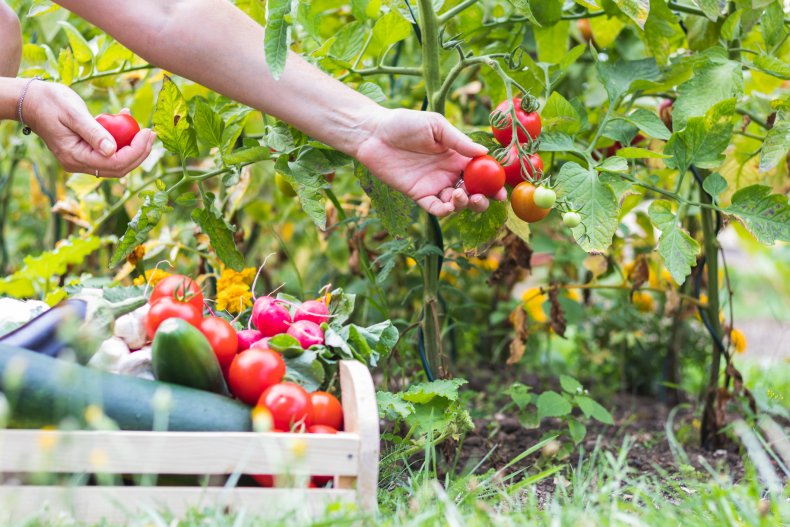
Rich in nutrients and low in calories, a raw tomato is comprised of water, but offers plenty of vitamin C, is rich in potassium and packed with other vitamins and minerals needed for a healthy body.
Easy Garden Irrigation's Sean Lade is a huge fan of this crimson-red and versatile fruit, stating: "Honestly, nothing beats eating a fresh, sun-ripened tomato."
Tomatoes are ideal for growing in containers, either in a greenhouse or in a sunny spot in the garden and are easy to raise from seed in March on a warm, well-lit windowsill or in a heated propagator set to a temperature of 20°C. Germination takes about two weeks.
Lade said: "When germinated, move the seedlings to individual pots, then transport them outside when the frosts have passed (late May or early June).
"Depending on the variety you sow, when the tomato plants grow, they will need regular maintenance – watering, feeding, tying to supports, but nothing that could be considered challenging.
"If you choose a variety that grows like a bush rather than tall, you won't need to support the plant.
"When the plant has reached roughly 60cm, it is good practice to prune your plant of all new side shoots called suckers. This will give more energy to the plant to procure flowers and tomatoes. "
3. Potatoes
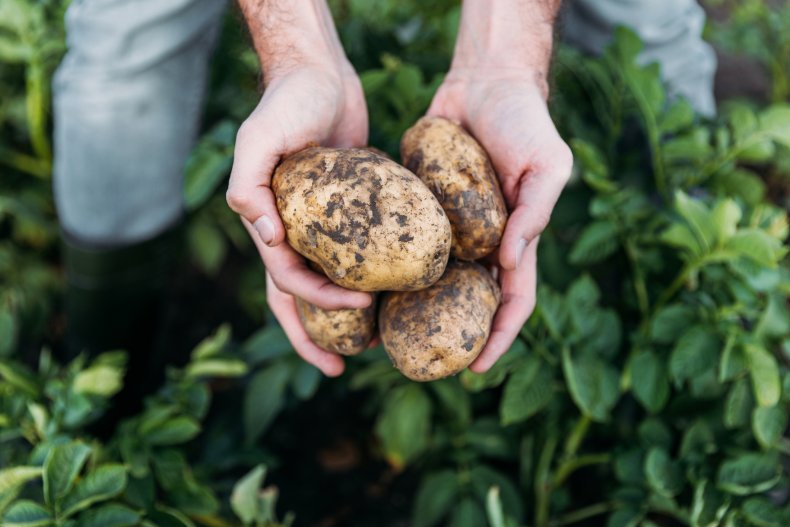
Potatoes are a great source of carbohydrates and an ideal replacement for pasta or rice; if you cook and eat them with the skins on, you will retain a lot of fibre and important nutrients like vitamin C, potassium, magnesium, zinc and iron.
You can buy seed potatoes in many shops and garden centres and there is a large variety.
Sean Lade describes potatoes as "very easy to grow outside and can be planted from mid-March."
He added: "You can grow them in larger containers such as grow bags for potatoes, raised planters or just dig up an area in the ground. Add some rich compost as potatoes love nutrient-rich soil.
"If you are using a planter or grow bag, only fill half of the container when you are planting your seed potato and give them about 30cm apart.
"Cover them with soil, about 10-20 cm and when the shoots reach 20 cm tall you will need to add more soil to cover the base around the shoot.
"This will encourage more potatoes to grow from that stem that has been covered with soil. Water them regularly during warm dry weather and make sure that the soil is weed-free.
"You'll soon see large leafy stems growing and once that is starting to wilt, going from green to a more yellow colour, that's a good indicator that the potatoes are ready to harvest."
4. Radishes
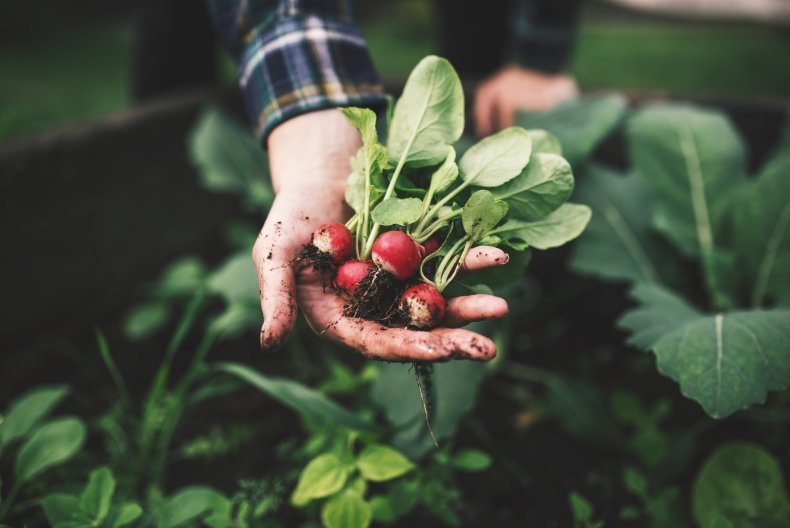
Lade dubs radishes as: "The easiest and quickest vegetable to grow, and come with a host of health benefits.
The gardening expert added: "High in fibre, packed with potassium (helps control blood pressure), rich in vitamin C and a long list of other vitamins and minerals that help keep the body in good working order.
"You can put the seeds directly into the ground or a container of your choice from early April onwards. Sow the seeds 1cm deep into the ground and about 2.5cm apart.
"Summer radishes need as little as four weeks from germination to harvest. Pick and eat while they are small and crunchy before they grow too big and become woody and not very tasty."
5. Chard

The green-fingered gardening expert describe3s rainbow chard as "surprisingly easy to grow."
He said: "As with salad leaves, you can pick off individual leaves and leave the rest to keep growing.
"[Rainbow chard] doesn't need much space to grow and provides you with a good supply of protein, fibre and vitamins.
"t's a versatile leaf that you can throw in a salad or cook with like spinach. You can sow and grow them much of the year in multi-purpose compost, especially if you have a cloche to cover them during the worst weather."
6. Peas

A spokesperson for Yes peas suggests there is little like the flavour of this freshly picked vegetable, as long as peas are used as quickly as possible after picking for maximum sweetness.
They said: "Select a sunny, well-drained spot and dig in plenty of compost to improve the soil ahead of planting
your pea seeds.
"Use a hoe or spade to make a trench in the soil, around 3cm deep and 21cm wide, then grab your pea seeds and sow in a parallel line.
"Cover the seeds with soil and water every two or three days and the seedlings should appear in one or two weeks."
How to Maintain a Vegetable Patch
UK-based shed manufacturer Power Sheds, has teamed up with the almost 50,000 strong Facebook allotment enthusiasts community 'Allotment Hints & Tips' to provide six vital tips to help veg patch newcomers find success in their first year.
Keep it cheap
When starting a vegetable patch or allotment, there's really no need to go spending big money from the outset. After all, all you'll need to start your plot is a good patch of soil and some seeds, or you could even use an existing shed in which to start growing.
Start with spuds
Potatoes are the perfect vegetable to start with for your vegetable patch as they're relatively easy to take care of and show results quickly. Start to chit your seeds in mid to late February, ready to plant around Easter time.
Grow what you eat
Aside from the enjoyment of spending time cultivating your vegetable patch, the result is where it all culminates. Grow the things you'd usually have on your dinner table to give yourself the satisfaction of eating and enjoying the fruits of your labour at the end.
Plant tomatoes sideways
Tomatoes have 'adventitious' roots, which means that the roots can grow from anywhere up the stem. When you're planting new tomato plants, place them in sideways to maximise the number of roots and amount of water and nutrients they can absorb.
Copy other gardens
Start to look at other people's gardens (or plots if you have an allotment), take note of what they're starting off and when, this will all help inform how you approach your own vegetable patch.
Read the seed packet
It might sound simple and even obvious, but just following the instructions on the side of the seed packet is an essential way to help ensure success in your vegetable patch. Similarly, joining an online community of gardeners can be a great way to find essential advice.
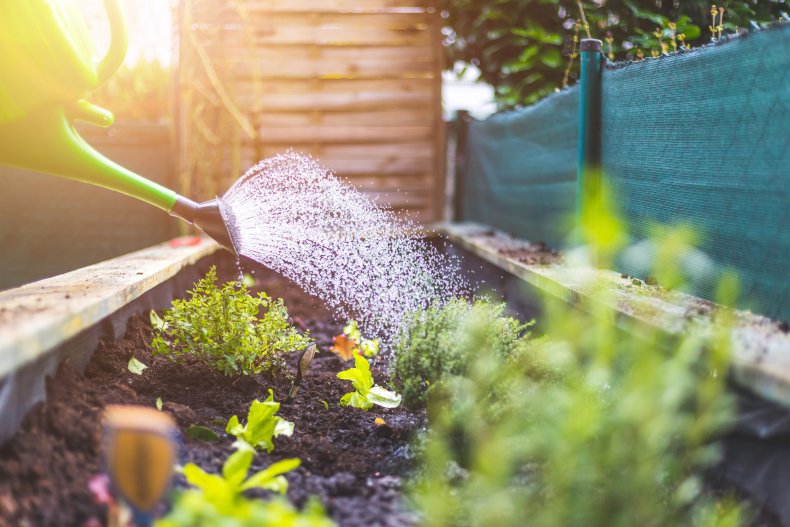
"vegetable" - Google News
March 06, 2022 at 10:30PM
https://ift.tt/RDj6hwI
Easy Vegetables to Grow for Even the Most Inexperienced Gardeners - Newsweek
"vegetable" - Google News
https://ift.tt/9jxLTGu
https://ift.tt/WNRwL4J
Bagikan Berita Ini














0 Response to "Easy Vegetables to Grow for Even the Most Inexperienced Gardeners - Newsweek"
Post a Comment